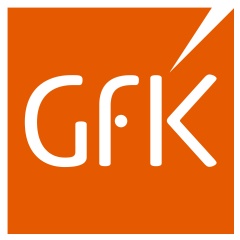Consumer sentiment is stabilizing
Consumer confidence in Germany is halting its downward trend at the beginning of 2022. In January, compared with the previous month, both economic and income expectations have ticked upwards, as has purchasing propensity. GfK is forecasting a decrease of -6.7 points in consumer sentiment for February 2022, up 0.2 points from January of this year (revised from -6.9 points). These are the findings of the GfK Consumer Sentiment Study for January 2022.
This means that consumer sentiment is slightly rising again after two consecutive cycles of decline. However, the rising propensity to save is currently preventing a more significant rise in consumer sentiment.
“Despite rising incidences and inflation, consumers are once again showing some optimism at the beginning of the year. In particular, they are hoping for a slight alleviation in price trends, as in January 2022 the base effect resulting from the January 2021 reversal of the VAT cut will mitigate the inflation rate to some degree. Nevertheless, consumers price expectations remain significantly higher than in recent years.”, explains Rolf Bürkl, GfK consumer expert. “In addition, experts assume that the pandemic situation would ease in the spring, which will lead to a number of restrictions being removed.”
The comprehensive outlook on consumption will depend primarily on the course of the pandemic. If the infection levels calm in spring, allowing for restrictions to be lifted, the long hoped-for recovery of the domestic economy will also materialize.
Economic expectations halt downward descent
After three consecutive cycles of decline, consumer sentiment trended upward again in January, with the indicator gaining 5.7 points, climbing to a total of 22.8 points. This represents an increase of more than 21 points in year-on-year comparisons.
According to information from the Federal Office of Statistics, the German economy grew by 2.7 percent last year. It is expected to accelerate development even further in 2022, with private spending playing an important role. However, this assumes that issues with the supply chain can be resolved.
Income expectations are back in positive territory after three cycles of decline
Income expectations are also gaining ground again after three months of decline. With an increase of 10 points, the indicator has risen to 16.9 points. Comparable to the economic sentiment, the income indicator is also significantly above its year-on-year level (+19.8 points).
This means that the outlook on income is defying the recent steep rise in prices. Apparently, many consumers are expecting price trends to ease to some degree this year. In addition, many workers hope that the higher prices will also lead to corresponding wage increases. Given the very positive employment situation and the shortage of skilled workers in some sectors, these hopes are entirely justified.
Propensity to buy recovers slightly
In addition to economic and income expectations, the propensity to buy is also rising as a result of the general improvement in sentiment. The indicator has gained 4.4 points, climbing to a total of 5.2.
Despite the current increase, the trend to consume among Germans has so far remained conservative. In addition to inflation, pandemic-related restrictions are likely to be the main factor preventing a more robust recovery in consumer sentiment. The mandatory use of masks and the German “Fully Vaxxed or Recovered” rule still do not inspire a real desire to go out and spend.
Planned publication dates 2022:
• Wednesday, 2/23/2022, 8:00 a.m.
• Tuesday, 3/29/2022, 8:00 a.m.
• Wednesday, 4/27/2022, 8:00 a.m.
• Wednesday, 5/25/2021, 8:00 a.m.
• Tuesday, 6/28/2022, 8:00 a.m.
• Wednesday, 7/27/2022, 8:00 a.m.
• Friday, 8/26/2022, 8:00 a.m.
• Wednesday, 9/28/2022, 8:00 a.m.
• Thursday, 10/27/2022, 8:00 a.m.
• Friday, 11/25/2022, 8:00 a.m.
• Wednesday, 12/21/2022, 8:00 a.m.
About our methods
The survey period for the current analysis was November 4 to November 15, 2021. The results are extracted from the “GfK Consumer Sentiment MAXX” study and are based on around 2,000 consumer interviews per month conducted on behalf of the European Commission. This report presents the indicators in graphical form, accompanied by brief comments. Consumer sentiment refers explicitly to all private consumer spending. Depending on the definition used, however, retail accounts for only around 30 percent of private consumer spending. Services, travel, rent, health services, and the wellness sector as a whole account for the rest. Again, this does not concern retailer sales, but instead refers to total consumer spending. Propensity to buy, like all other indicators, is a confidence indicator. It indicates whether consumers currently consider it advisable to make larger purchases. Even if they answer “Yes” to this question, there are two further requirements for making a purchase: The consumer must have the money required for such a large purchase and must also see a need to make this purchase. Furthermore, this actually only concerns durable consumer goods that also require a larger budget.
GfK. Growth from Knowledge.
For over 85 years, we have earned the trust of our clients around the world by supporting them in business-critical decision-making processes around consumers, markets, brands, and media. Our reliable data and insights, together with advanced AI capabilities, have revolutionized access to real-time, actionable recommendations that drive marketing, sales and organizational effectiveness of our clients and partners. That’s how we promise and deliver Growth from Knowledge.
( Press Release Image: https://photos.webwire.com/prmedia/7/284491/284491-1.png )
WebWireID284491
This news content was configured by WebWire editorial staff. Linking is permitted.
News Release Distribution and Press Release Distribution Services Provided by WebWire.
